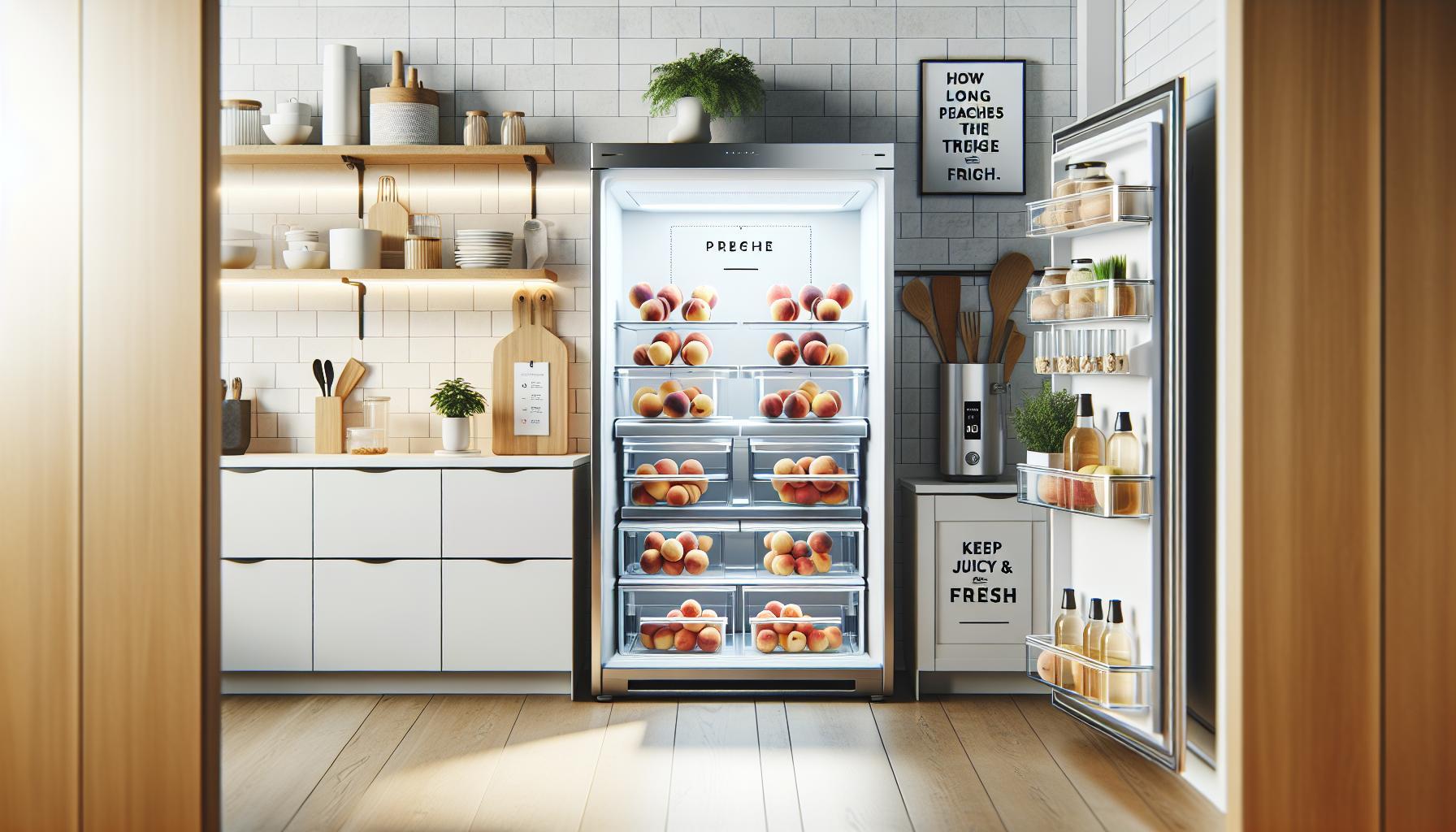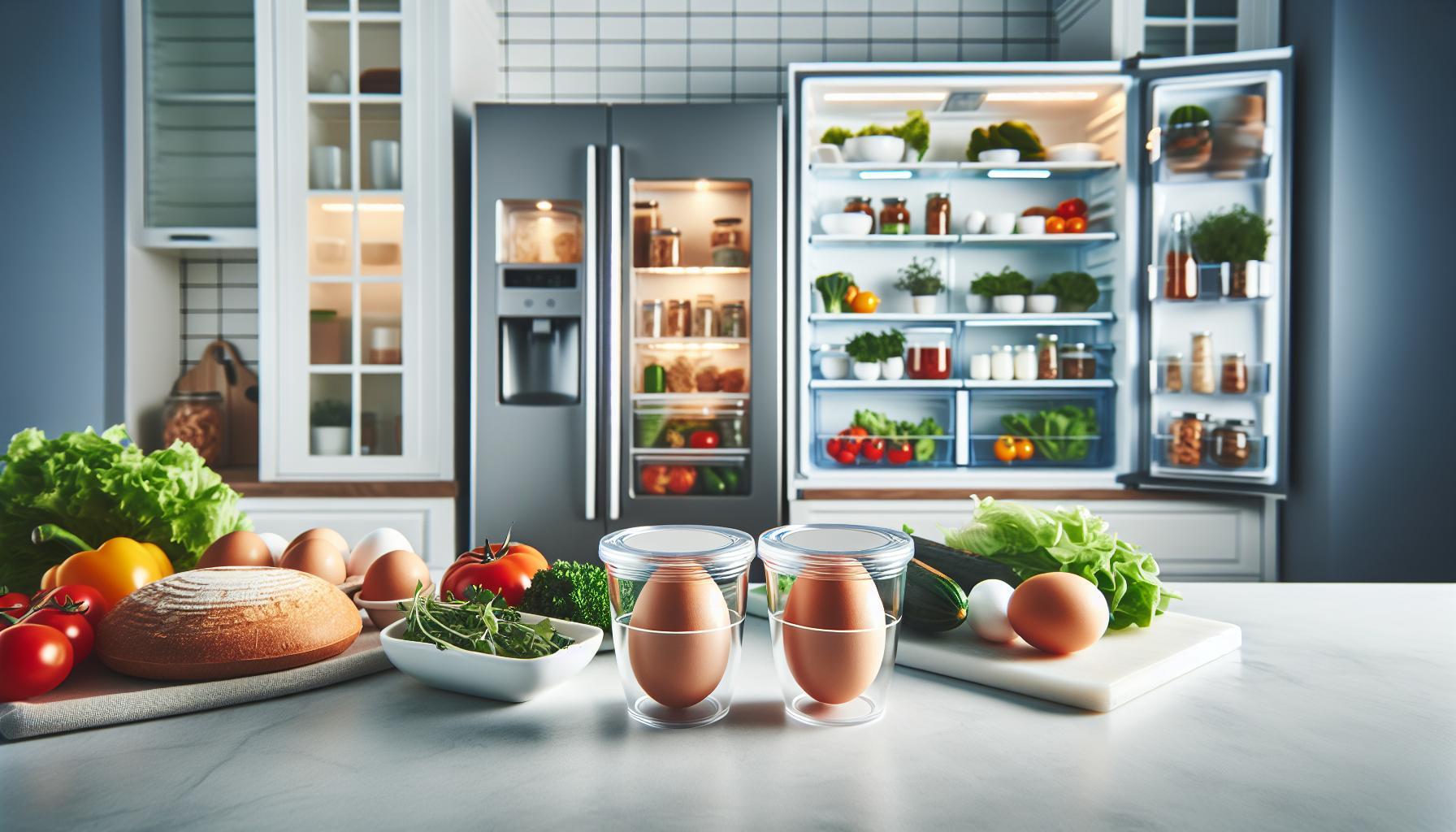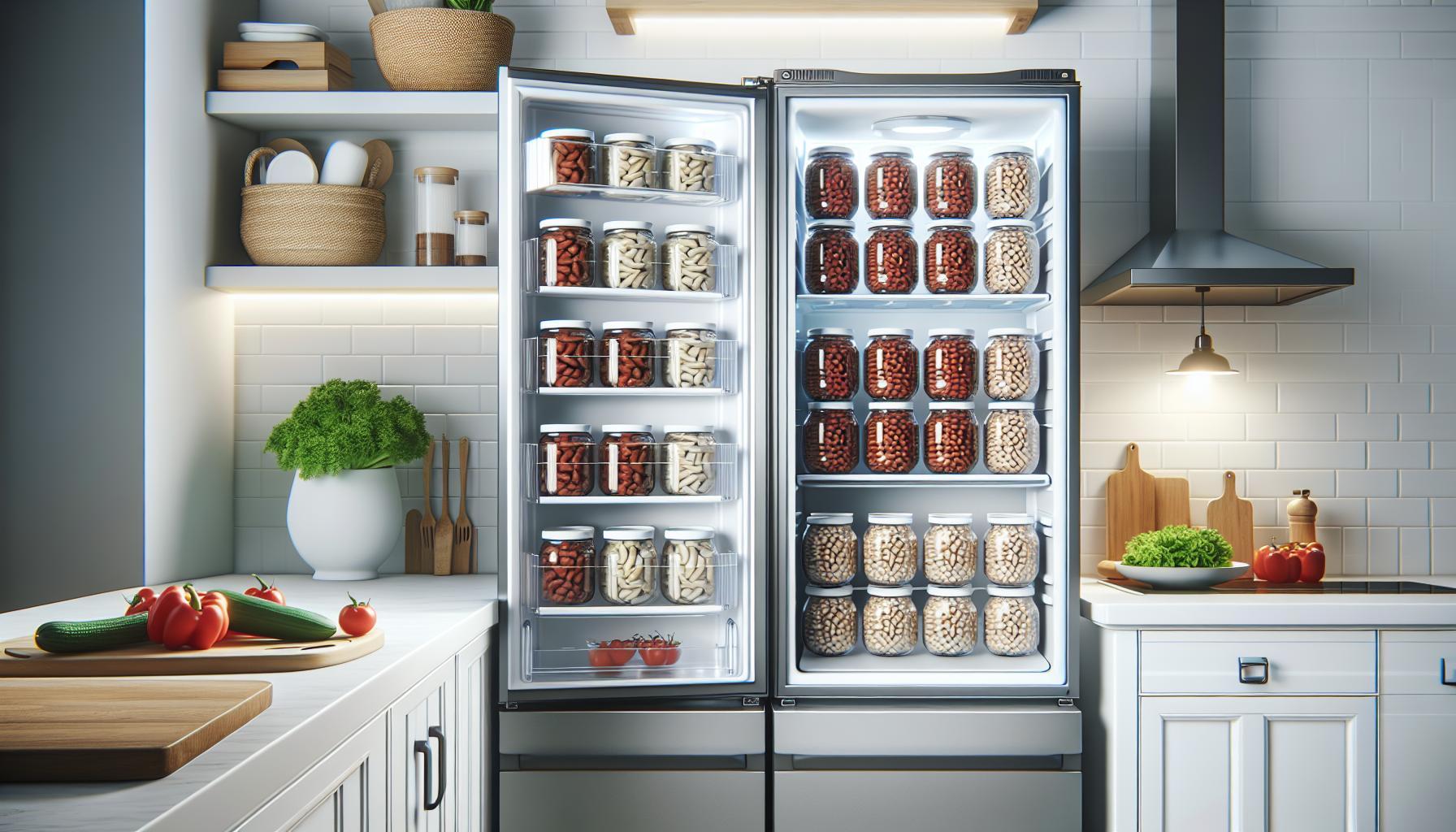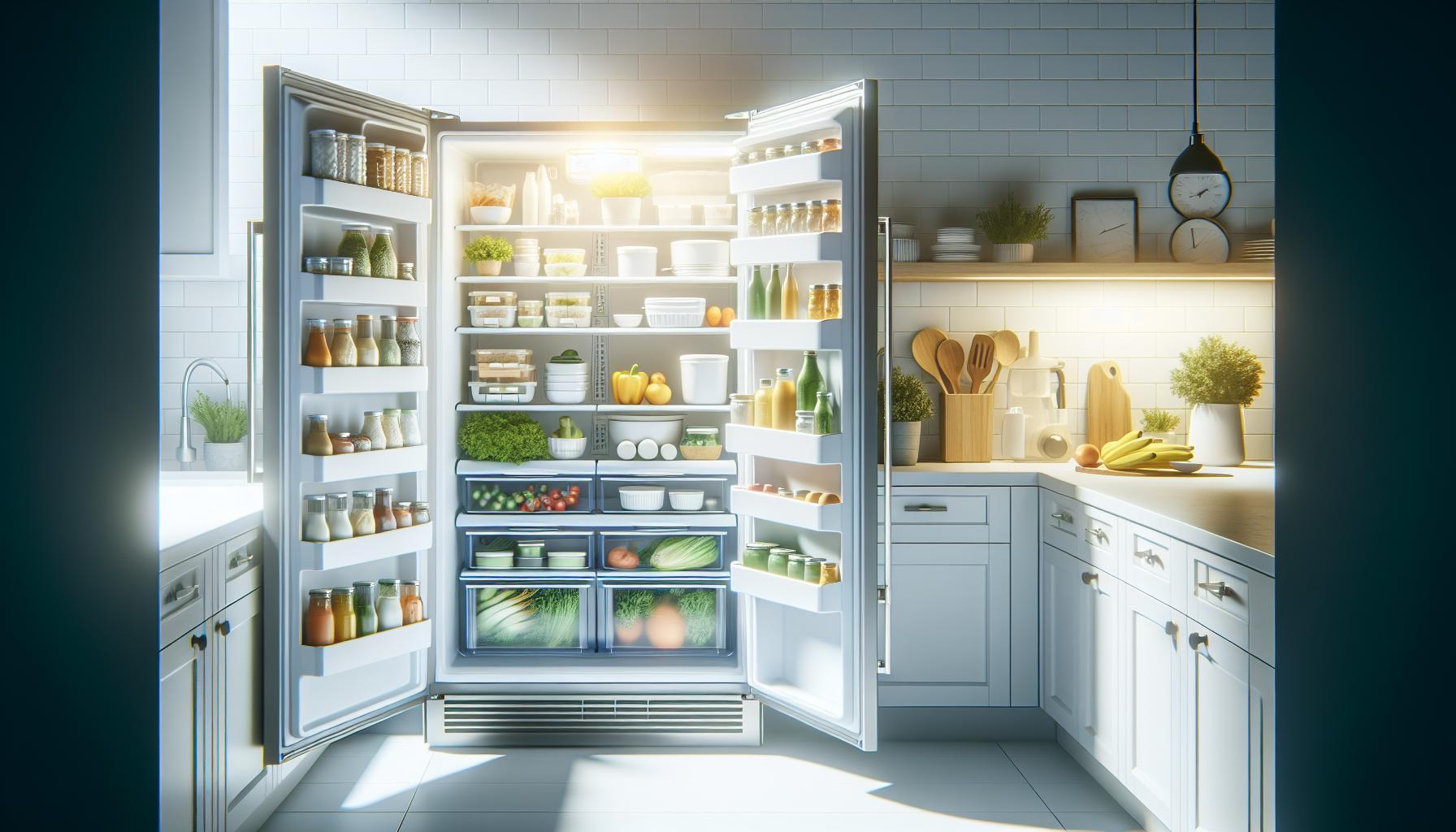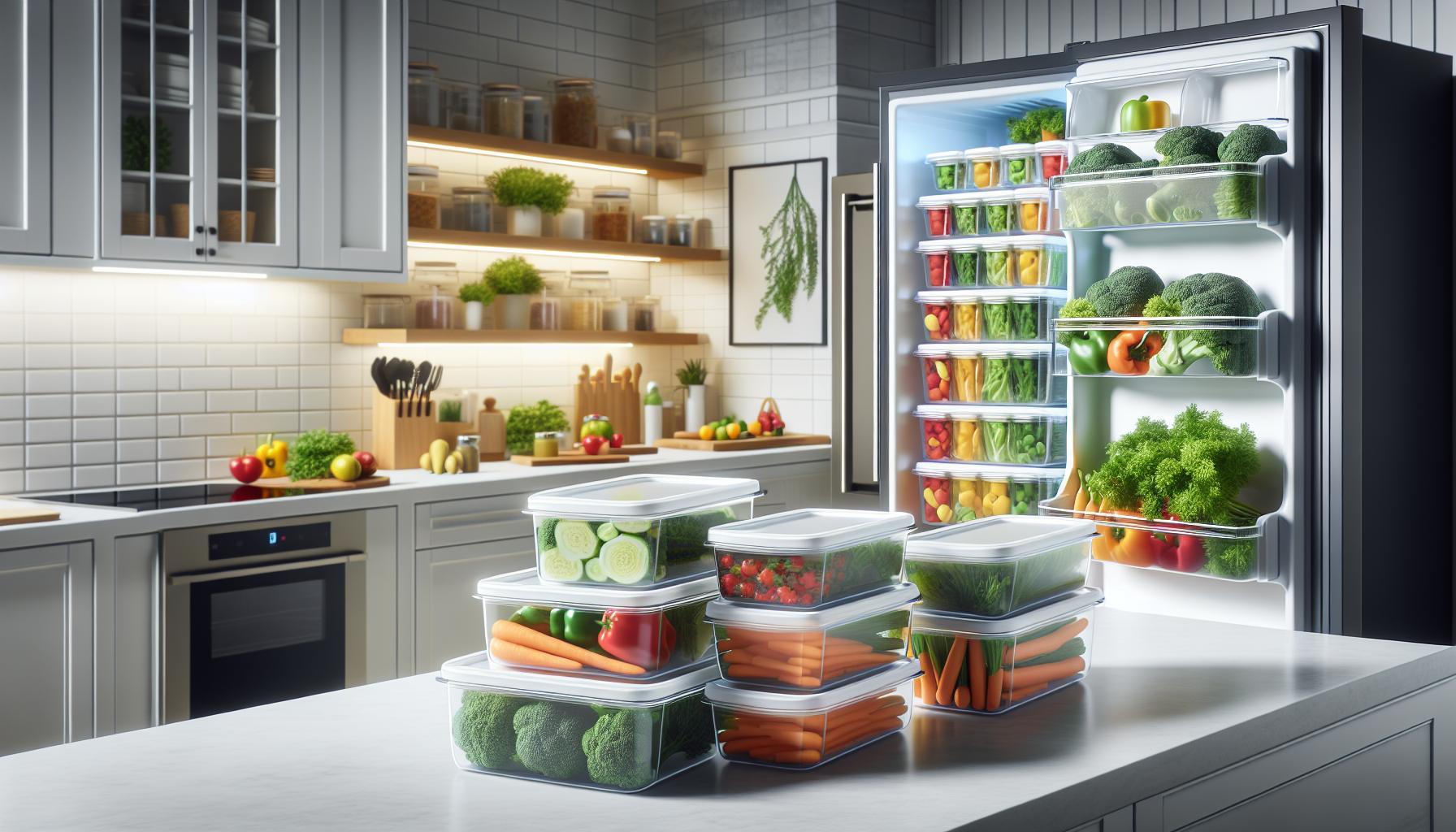Peaches are not only delicious but also delicate, making proper storage essential to keep them juicy and fresh. You might be surprised to learn that the way you store peaches in the fridge can significantly affect their texture and flavor. So, how long do they really last in the fridge, and what can you do to maximize their shelf life?
Understanding the optimal storage time for peaches helps you avoid waste and ensure that each bite is as sweet as possible. This guide will provide you with science-backed tips and practical advice on how to keep your peaches at their best, so you can enjoy their juicy goodness whenever the craving strikes. Whether you’re looking to stock up on peaches for a recipe or just love snacking on them, knowing how to store them properly makes all the difference. Let’s dive into the best practices for keeping your peaches ripe, fresh, and full of flavor.
How Long Do Peaches Last in the Fridge?
Fresh peaches are a delightful summer fruit, but knowing how long they last in the fridge is crucial for minimizing waste and maximizing enjoyment. When stored properly, fresh peaches can typically last between 5 to 7 days in the refrigerator. The key to extending their lifespan is to refrigerate them only after they have ripened at room temperature. This initial ripening allows the peaches to develop their full flavor and texture.
Once ripe, gently place the peaches in a breathable container or a plastic bag with a few holes for air circulation to maintain their freshness. It’s essential to keep them away from ethylene-sensitive fruits and vegetables to prevent them from overripening prematurely. Remember, if you notice any bruised or damaged peaches, remove them immediately, as they can cause the others to spoil faster.
In summary, by following these simple storage tips, you can keep your peaches juicy and delicious for up to a week, allowing you to enjoy their sweet flavor just when you’re ready.
Optimal Storage Methods for Fresh Peaches
Fresh peaches, with their succulent sweetness and vibrant flavor, are not only a summertime treat but also a delicate fruit that requires thoughtful storage to maximize their shelf life. To keep peaches fresh and juicy, the optimal approach involves a few key steps that can significantly extend their storing potential.
First and foremost, allow the peaches to ripen at room temperature if they are not fully ripe when purchased. The best practice is to place them stem-side up in a single layer, ideally in a shallow bowl, for about 1 to 3 days. Once they achieve the desired softness and aroma, it’s time to transition them to the refrigerator. This is crucial as cold temperatures can inhibit the ripening process, preventing the fruit from developing its full flavor.
When storing ripe peaches in the fridge, choose a container that promotes airflow to reduce moisture accumulation, such as a mesh bag or a container with ventilation holes. Placing them in a breathable material helps prevent mold while maintaining optimal humidity. Avoid sealing them tightly in plastic wrap or bags without ventilation, as this can lead to ethylene gas buildup, which accelerates spoilage. It’s advisable to store peaches away from other fruits, particularly those sensitive to ethylene, like bananas and avocados.
In summary, storing ripe peaches in a well-ventilated environment within the refrigerator after a proper ripening period at room temperature will not only enhance their longevity but also preserve their delightful juiciness, allowing you to savor their flavor longer. By following these methods, you can enjoy your peaches fresh for up to a week!
Identifying Signs of Spoilage in Peaches
Recognizing when peaches have spoiled is crucial for both safety and taste. Fresh peaches can serve as a delightful snack or ingredient, but they have a limited shelf life. Typically, refrigerated peaches can last between five to seven days, depending on their ripeness at the time of storage. To ensure you enjoy them at their best, it’s important to be vigilant for signs of spoilage.
One of the most obvious indicators is the appearance of mold. If you notice any fuzzy white or green spots on the skin, it’s a sign that the fruit is no longer safe to eat. Additionally, pay attention to cracks in the skin, which can serve as entry points for bacteria or spoilage organisms. Should the peach feel unusually mushy or develop dark spots, these are further signs of deterioration that you should not ignore.
Another factor to consider is the aroma. Fresh peaches emit a sweet, fragrant scent. A sour or off-putting smell can indicate fermentation or spoilage. Lastly, if you cut into a peach and notice an unusual texture or flavor-dryness or an overly rancid taste-it’s best to err on the side of caution. Make sure to inspect peaches closely when using or preparing them, as consuming spoiled fruit can pose health risks.
Keep in mind that proper storage can significantly affect the longevity of your peaches. To maximize freshness, regularly check your fruit for any signs of spoilage and utilize them promptly based on their condition to enjoy their deliciousness at its peak.
Best Practices for Keeping Peaches Juicy
To maintain the succulent texture and vibrant flavor of peaches, implementing effective storage techniques is essential. One of the most crucial strategies is to refrigerate peaches once they are ripe. This helps slow down the process of over-ripening, allowing you to enjoy their juicy goodness for a longer period. Ideally, store peaches in a breathable container, like a paper bag or a bowl lined with a cloth, to avoid moisture accumulation that can lead to spoilage. When placing them in the refrigerator, keep them in the crisper drawer, which is designed to provide a slightly higher humidity level, preserving their delicate moisture.
Another valuable practice is to handle peaches with care. Peaches bruise easily, which not only affects their appearance but can also hasten spoilage. Always wash your hands before handling them, and gently place them in storage to prevent damage. Additionally, keep peaches away from ethylene-sensitive fruits and vegetables, like bananas and avocados; while ethylene gas can enhance ripening, too much exposure can lead to accelerated spoilage.
Moreover, if you’re fortunate enough to have extra juicy peaches that you know you won’t consume in time, consider preserving their quality through freezing. To freeze peaches effectively, wash them thoroughly, cut them in half, remove the pit, and slice into desired sizes. Blanching them briefly in boiling water can help maintain color and flavor. After blanching, plunge them into an ice bath to stop the cooking process. Once cooled, drain and pack the peaches in airtight freezer bags or containers, sealing tightly to avoid freezer burn. When stored this way, frozen peaches can last up to a year, providing a delicious addition to smoothies, desserts, and other recipes long after peach season ends.
In essence, keeping your peaches juicy and fresh involves proper refrigeration, gentle handling, and the option of freezing. By following these best practices, you can extend the life of your peaches, ensuring they remain a delightful treat whenever you reach for them.
How Temperature Affects Peach Freshness
The ideal temperature for storing peaches is typically between 30°F and 37°F (-1°C to 3°C), which coincides with the temperature range of most home refrigerators. At these temperatures, the ripening process slows considerably, allowing the peaches to retain their flavor and texture for longer periods. Exposing peaches to higher temperatures can significantly accelerate ripening, leading to over-ripening and spoilage, while excessively low temperatures can cause chilling injury, which manifests as mealy texture and loss of flavor.
In practice, once peaches have reached their perfect ripeness at room temperature, they should be promptly transferred to the refrigerator. It’s advisable to store them in the crisper drawer, which offers a slightly more humid environment, as opposed to the drier air of the main refrigerator space. To prevent bruising, peaches should be handled with care, and placing them in a breathable container-such as a perforated bag or a shallow bowl lined with a cloth-can help mitigate the risk of spoilage caused by moisture accumulation.
Maintaining a consistent refrigerator temperature is crucial. Frequent opening of the fridge or fluctuating temperatures can expose peaches to conditions that encourage spoilage. To ensure freshness, it’s best to consume refrigerated peaches within 5 to 7 days. If you’re unable to eat them in this time frame, consider freezing them to extend their longevity. By following these temperature guidelines, you can savor the delightful sweetness and juiciness of peaches even beyond their natural shelf life.
Storing Peaches: Tips for Maximum Longevity
Storing peaches properly is essential to extend their freshness and prevent spoilage. To achieve maximum longevity, begin by selecting peaches that are just ripe, as they will continue to ripen perfectly in refrigeration. Once they reach ideal ripeness, which is indicated by a slight give when gently squeezed, transfer them promptly to the refrigerator.
To create the optimal storage environment, choose the crisper drawer of your fridge, which maintains higher humidity and helps prevent moisture loss. Arrange the peaches in a single layer to avoid bruising and protect their delicate skin. Use breathable containers like perforated bags or a shallow bowl lined with a cloth; these allow for air circulation, which is vital for maintaining freshness and staving off mold. Avoid airtight containers, as they trap moisture, leading to rapid spoilage.
Regularly check your peaches for any signs of soft spots or mold. If you spot an overripe or spoiled peach, remove it immediately to prevent the spread of spoilage to the others. Proper storage techniques can help you enjoy the nectarous sweetness of peaches for about 5 to 7 days in the refrigerator. If longer storage is necessary, freezing is an excellent option, allowing you to retain their flavor and texture for months. Simply slice the peaches, remove the pits, and lay them flat on a baking sheet to freeze separately before transferring them to a freezer-safe bag. This method ensures that you can enjoy summer’s fresh taste even in the depths of winter.
Can You Freeze Peaches? A Step-by-Step Guide
Freezing peaches is one of the best ways to preserve their natural sweetness and juicy flavor, allowing you to enjoy them long after their peak season. If you have an abundance of fresh peaches and want to prolong their shelf life, follow these simple steps to ensure your frozen peaches maintain their taste and texture.
Start by selecting ripe, unblemished peaches. Rinse them under cold water and dry them thoroughly. To make peeling easier, blanch them in boiling water for about 30 seconds, then immediately transfer them to an ice bath. This quick process loosens the skin, making it effortless to remove.
Once peeled, slice the peaches in half and remove the pit. You can choose to slice them into smaller pieces or leave them halved, depending on your planned use later. To prevent browning, consider tossing the peach slices in a mixture of lemon juice and water or sprinkling them lightly with ascorbic acid. This step isn’t strictly necessary, but it helps maintain the vibrant color and fresh taste.
Next, spread the peach slices in a single layer on a baking sheet lined with parchment paper. Place the sheet in the freezer for a few hours, until the peaches are frozen solid. This method, known as flash freezing, prevents the pieces from sticking together, allowing you to portion out exactly what you need later. Once frozen, transfer the peach slices into airtight freezer bags or containers, labeling them with the date for future reference. Properly stored, frozen peaches can last for up to 12 months in the freezer.
Using frozen peaches is versatile, as they can be added directly into smoothies, made into pies, or incorporated into savory dishes. Thawing them is simple-just transfer them to the refrigerator overnight or place them in a bowl at room temperature for a couple of hours. With this method, you’ll have delightful peaches at your disposal, ready to enhance a variety of meals, all while making the most of their seasonal bounty.
Using Ripe Peaches: Recipes and Ideas
The natural sweetness and rich flavor of ripe peaches make them a delightful addition to a variety of dishes, elevating meals and snacks alike. When you’re dealing with fresh peaches that have reached their peak ripeness, the culinary possibilities are endless. Their juicy texture and aromatic fragrance can enhance everything from breakfast to dessert, making them a fantastic ingredient to work with.
One of the simplest ways to enjoy ripe peaches is to slice them and add them to your morning oatmeal or yogurt. For a flavorful twist, consider making a delicious peach compote: simmer chopped peaches with a splash of lemon juice, a sprinkle of sugar, and a hint of cinnamon until they soften. This compote can be drizzled over pancakes, waffles, or ice cream, adding a burst of summer flavor to any dish.
If you’re looking for something more adventurous, grilling peaches can surprise your taste buds. Halving the peaches and brushing them lightly with olive oil before placing them on a hot grill transforms their sweetness into caramelized bliss. Serve them alongside grilled meats or top them with burrata cheese and fresh basil for a mouthwatering salad. Additionally, ripe peaches can shine in savory recipes, such as salsa. Dice them up with tomatoes, onions, cilantro, and lime juice for a refreshing topping on tacos or grilled fish.
Peaches also lend themselves well to baked goods. Consider adding them to muffins, cobblers, or crisps for a comforting dessert. A traditional peach pie, with its flaky crust and sweet filling, is a classic favorite that showcases the fruit beautifully. Whichever way you choose to enjoy them, ripe peaches are best appreciated quickly; they typically last about 3-5 days in the refrigerator. Keep an eye on their firmness and color, as this will indicate when they’re at their peak for maximum flavor and enjoyment.
Common Myths About Peach Storage Debunked
Misconceptions about peach storage can lead to unnecessary spoilage and waste. One common belief is that peaches should be washed before refrigeration. However, washing them prematurely can actually promote mold growth because the moisture remains on the skin. Instead, it’s advisable to wash peaches just before consumption to keep their skin dry and reduce spoilage risk.
Another myth is that all peaches ripen the same way. In reality, the ripening process can vary significantly between clingstone and freestone peaches. Clingstone peaches tend to be firmer and may last longer in storage compared to their freestone counterparts, which soften more rapidly. Knowing the type you have can help you better predict their shelf life and ripeness.
Additionally, some people think that refrigerating peaches immediately after purchase is always beneficial. While refrigeration can extend their life for a few days, peaches store best at room temperature until they reach optimal ripeness. Placing them in the fridge too soon can halt their ripening process, leading to a less flavorful product. A balance of room-temperature storage followed by refrigeration-once ripe-ensures both the flavor and texture are preserved.
Finally, there’s a misconception that once a peach begins to show minor blemishes, it’s beyond rescue. In truth, a peach may still be perfectly fine to eat even if it’s not visually perfect. Small blemishes can often be cut away, allowing you to enjoy the majority of the fruit. Instead of discarding seemingly spoiled peaches, a little inspection can reveal that they still hold juicy, delicious flesh waiting to be savored.
The Impact of Ethylene Gas on Peach Longevity
Ethylene gas plays a crucial role in the ripening and longevity of peaches, acting as a natural plant hormone that signals the fruit to mature. As peaches ripen, they release ethylene gas, which not only accelerates their own ripening process but also affects nearby fruits. Understanding the dynamics of ethylene can help you manage your peach storage more effectively, ensuring they remain juicy and fresh for as long as possible.
When peaches emit ethylene, it can lead to a faster decline in quality if they are stored alongside ethylene-sensitive fruits, such as bananas and avocados. To maintain optimal freshness, it’s advisable to keep peaches separate from these fruits during storage. Instead, placing them in a single layer in a breathable container, such as a bowl or a perforated plastic bag, can help regulate ethylene levels and prolong their juiciness. Additionally, ensure that your storage environment maintains a moderate temperature, as extreme heat can enhance ethylene production, hastening spoilage.
While ethylene promotes ripening, it’s essential to strike a balance between letting peaches mature and preventing them from overripening. After achieving the desired ripeness, refrigerate the peaches to slow down the ethylene production and preserve quality. Typically, ripe peaches can last about 3 to 5 days in the fridge, but if they are well-managed in terms of ethylene exposure and temperature, they may extend their shelf life even further.
Another beneficial tip is to regularly check your peaches, removing any that show signs of over-ripening. Peaches that are not yet ripe can be left at room temperature and monitored for ethylene production. As they begin to emit more ethylene, it is a signal that they’re ready to be enjoyed or stored in the fridge to halt further ripening. This proactive approach will ensure you maximize the deliciousness of your peaches while minimizing waste.
How to Choose the Freshest Peaches at the Market
Selecting the perfect peaches is an essential step in ensuring that your culinary experiences are delightful and that your fruit stays fresh for as long as possible. When you’re at the market, eyes peeled for ripe peaches, you should look for a few key characteristics. First, examine the color; the ideal peach should have a vibrant hue, with shades ranging from deep yellow to rich orange, ideally with a blush on one side. A lack of green undertones is a good indicator that the fruit is ripe and ready to be enjoyed.
Touch is also critical in your selection process. Gently squeeze the peach; it should yield slightly to pressure without feeling mushy. This gives you a sense of its ripeness-overly hard peaches are likely unripe and will take longer to mature, while those that are too soft may be overripened and more susceptible to spoilage. It’s also wise to check for bruises or blemishes, which can indicate that the peach is damaged and may spoil sooner. If you find a peach with minor imperfections, consider using it quickly for cooking or baking.
Smell is another excellent guide during your selection process. Ripe peaches emit a sweet, fragrant aroma that becomes noticeable as you move closer. If you can’t detect any scent, it may be a sign that the fruit is not yet ripe. A compelling fragrance indicates a higher sugar content and better flavor. It’s a simple but effective way to gauge the potential sweetness of your peaches before making a purchase.
Lastly, keeping seasonal variations in mind can enhance your peach-picking skills. Early summer heralds the arrival of the juiciest, sweetest fruits. When choosing peaches, seasonality can significantly impact flavor; fresher, local varieties often taste superior and have longer shelf lives compared to those transported long distances. Engage with local vendors for the best advice on the freshest arrivals, and you’ll be well on your way to selecting the juiciest peaches that not only taste fantastic fresh but will also maintain their quality for a longer time in your fridge.
Faq
Q: How can I make peaches last longer in the fridge?
A: To extend the lifespan of peaches in the fridge, store them in a breathable bag or container in the crisper drawer. Keeping the peaches slightly separated can reduce bruising and improve airflow, which helps maintain their freshness. Check them regularly for any signs of spoilage.
Q: What is the best temperature to store peaches?
A: The ideal temperature for storing peaches is between 30°F and 40°F (-1°C to 4°C). This range keeps peaches fresh without freezing them. Ensure your fridge is set to this temperature for optimal peach longevity.
Q: Can I wash peaches before storing them in the fridge?
A: It’s best not to wash peaches before storing them in the fridge, as excess moisture can promote mold growth. Instead, wash them just before consumption to preserve their texture and flavor while minimizing spoilage risks.
Q: How can I tell if peaches are still good to eat?
A: Check for firmness and pleasant aroma. If the skin is wrinkled, feels overly soft, or has mold spots, the peaches are likely spoiled. A healthy peach should be slightly yielding when gently pressed and have a sweet scent.
Q: Should I store ripe peaches differently than unripe peaches?
A: Yes, ripe peaches should be stored in the fridge to slow down the ripening process, while unripe peaches can be kept at room temperature to encourage ripening. Once ripe, transfer them to the fridge for longevity.
Q: How do I deal with overripe peaches? Can I still use them?
A: Overripe peaches can still be used in smoothies, baking, or sauces. If they’re very soft, consider pureeing them for a tasty topping or filling. Ensure to remove any bruised sections before use.
Q: Can I revive peaches that have become mushy?
A: While you can’t fully restore mushy peaches, you can use them in recipes like jams or desserts where their texture isn’t as critical. Consider incorporating them into oatmeal or pancake batter for a delicious flavor boost.
Q: What other fruits should I avoid storing with peaches?
A: Avoid storing peaches with fruits that produce high levels of ethylene gas, such as apples and bananas, as this can accelerate spoilage. Keep peaches isolated to prolong their freshness. For more storage tips, refer to the section on “The Impact of Ethylene Gas on Peach Longevity.”
Key Takeaways
To keep your peaches juicy and fresh, remember that they last about 1-2 weeks in the fridge when stored properly. By following our essential storage tips, you can enjoy their sweetness longer and minimize waste. Don’t hesitate to explore our other guides on fruit storage and preservation methods to further enhance your culinary skills.
Act now-check out our article on the best ways to ripen peaches for optimal flavor and discover innovative recipes that highlight this delicious fruit. Your next peach-inspired dish is just a click away! Share your thoughts or ask questions in the comments below, and let’s keep the conversation going. Together, we can make the most of every peach season!

